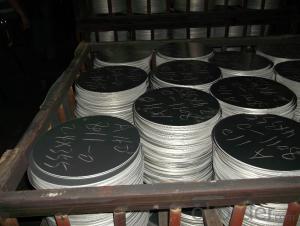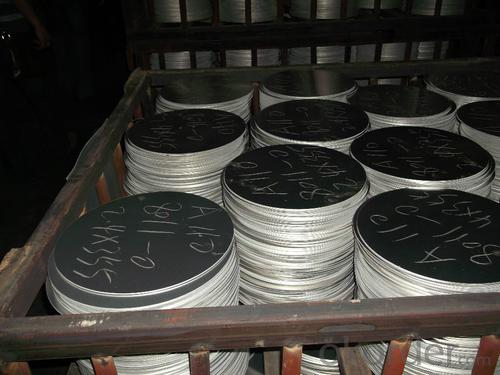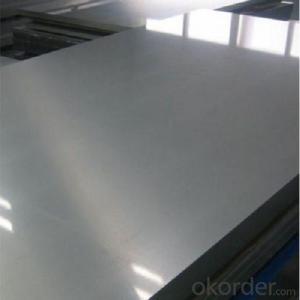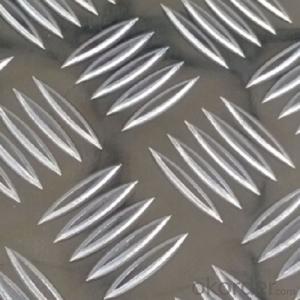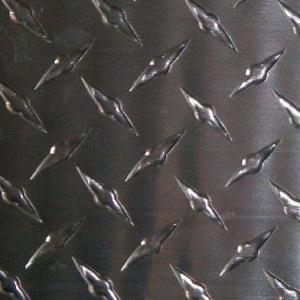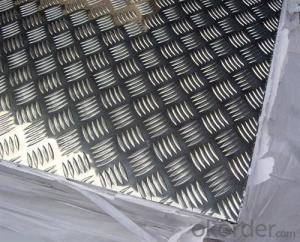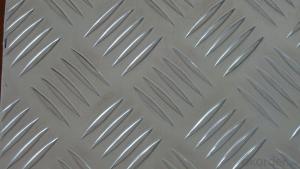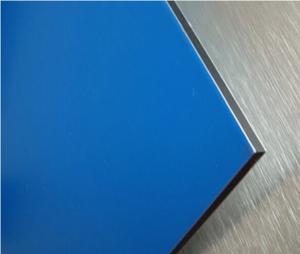5052 4mm Aluminum Awning Sheets - Checkered Plate for Household Use
- Loading Port:
- Shanghai
- Payment Terms:
- TT OR LC
- Min Order Qty:
- 1 m.t.
- Supply Capability:
- 6000 m.t./month
OKorder Service Pledge
OKorder Financial Service
You Might Also Like
Specification
5052 4mm aluminum checkered plate Household
Packaging & Delivery
| Packaging Details: | 25kg/carton-boxes(35*32*19CM) &Fumigation wooden-pallets (110*110*15cm) 20GP can loading 22 Ton,total 21 pallets,20 CBM. |
| Delivery Detail: | within 25 days |
Specifications
1).Excellent Surface Quality for lighting reflectors.
2).Excellent deep drawing and spinning quality.
3).Anodizing Quality
Aluminium circle/Aluminium discs/disks for cooking utensils Cookware
Aluminum disc Surface Finish: Bright & smooth surface, without flow lines, slightly oiled to avoid White rusting.Smooth,Brightly ,No Zone of Fracture ,No Scratched ,No oil Sludge
We enjoy a good reputation among our customers for our aluminum circle with high quality and competitive price, win high appreciation from our clients with the excellent workman-ship and professional ability. The quality matches with ISO 9001 quality management system.
It is equipped with 5 hot tandem rolling line, 4 cold mill production lines, 4 annealing surface machines and a complete finishing equipment.
Specification:
Alloy
Temper
Specification
Thickness
Diameter
1070,1050,3003,1100
O,H12,H14,H16
0.5-5.0mm
100-1200mm
Aluminum disc chemical Properties(WT.%)
Alloy
Si
Fe
Cu
Mn
Mg
Cr
Ni
Zn
Ca
V
Ti
Other
Min.A1
1050
0.25
0.4
0.05
0.05
0.05
-
-
0.05
-
0.05
0.03
0.03
99.5
1070
0.25
0.25
0.04
0.03
0.03
-
-
0.04
-
0.05
0.03
0.03
99.7
3003
0.6
0.7
0.05-0.2
1.0-1.5
-
-
-
0.1
-
-
-
0.15
96.95-96.75

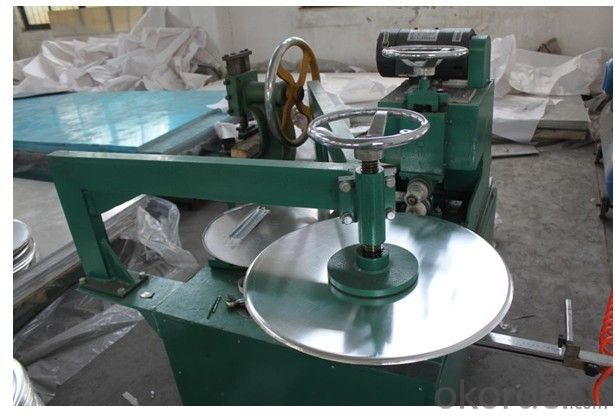
- Q: Can aluminum sheets be used for bus shelters?
- Yes, aluminum sheets can be used for bus shelters. Aluminum is a lightweight and durable material that is commonly used in construction projects, including bus shelters. It offers excellent resistance to corrosion, making it suitable for outdoor applications where it may be exposed to harsh weather conditions. Additionally, aluminum sheets can be easily formed and fabricated into various shapes and sizes, allowing for customized designs and easy installation. The use of aluminum sheets for bus shelters also provides a cost-effective solution as it requires minimal maintenance and has a long lifespan.
- Q: This question asks for methods to verify the quality of aluminum sheets before purchasing them.
- <p>To ensure the quality of aluminum sheets, first, check for certifications such as ISO or ASTM standards. Inspect the surface for any defects like scratches, dents, or unevenness. The color should be uniform and the edges should be smooth. Request a sample and perform a bend test to check for flexibility and strength. Ensure the thickness is consistent as specified. Look for a reputable supplier with good customer reviews. Lastly, consider the price; if it's too low, it might indicate compromised quality.</p>
- Q: Do 101 aluminum sheets have any specific insulation properties?
- 101 aluminum sheets do not possess any distinct insulation properties, as aluminum is an efficient conductor of both heat and electricity, failing to offer protection against temperature extremes. Nevertheless, these sheets can serve as reflective surfaces, effectively bouncing back heat or light. To achieve insulation, it is necessary to incorporate supplementary materials like foam or fiberglass in conjunction with the aluminum sheets.
- Q: How is aluminum obtained from its ore?
- Aluminum is obtained from its ore through a process called Bayer's process. The ore, known as bauxite, is first crushed and then mixed with a hot solution of sodium hydroxide. This reaction causes the aluminum oxide in the ore to dissolve, forming sodium aluminate. The impurities in the ore, such as iron oxide and silica, remain insoluble. Next, the solution is filtered to remove the insoluble impurities, leaving behind a clear liquid containing sodium aluminate. This liquid is then cooled and treated with carbon dioxide gas, which converts the sodium aluminate into aluminum hydroxide. The aluminum hydroxide is then heated to form alumina or aluminum oxide. This process, known as calcination, involves heating the aluminum hydroxide at high temperatures to remove any remaining water and impurities. Finally, the alumina is mixed with a molten cryolite, which acts as a solvent, and then electrolyzed. Electrolysis involves passing an electric current through the molten mixture, causing the aluminum ions to migrate to the cathode, where they are reduced to form molten aluminum metal. The molten aluminum is then collected and cooled to solidify into ingots or other desired shapes. In summary, aluminum is obtained from its ore by first extracting the aluminum oxide using sodium hydroxide, followed by purification and conversion into alumina through calcination. The alumina is then electrolyzed using a molten cryolite, resulting in the production of molten aluminum metal.
- Q: How does the surface treatment of aluminum sheet affect its appearance?
- The surface treatment of aluminum sheet can greatly affect its appearance. Different treatments such as anodizing, coating, or polishing can alter the texture, color, and shine of the aluminum surface. Anodizing can create a protective oxide layer while also providing a range of colors. Coatings can add a layer of paint or protective film, giving the aluminum a smooth or textured finish and providing various color options. Polishing can enhance the reflectivity of the aluminum, giving it a shiny and mirror-like appearance. Overall, the surface treatment plays a crucial role in determining the final look and visual appeal of the aluminum sheet.
- Q: Can aluminum sheets be used for battery casings?
- Yes, aluminum sheets can be used for battery casings. Aluminum is a lightweight and durable metal that offers excellent corrosion resistance, making it a suitable choice for battery casings. It is also a good conductor of electricity, which is important for efficient battery performance. Additionally, aluminum is easily formable and can be shaped into various designs and sizes, allowing for flexibility in battery casing manufacturing. Overall, aluminum sheets are commonly used in the production of battery casings due to their beneficial properties.
- Q: Describe the process of selecting an appropriate color for an exterior wall made from aluminum sheets.
- <p>Choosing a suitable color for an exterior wall made of aluminum sheets involves considering several factors. First, think about the architectural style and the existing color scheme of the building. Neutral colors like white, gray, or beige are versatile and can complement most designs. Consider the local climate; lighter colors reflect heat and are suitable for hot climates, while darker colors can absorb heat, making them ideal for cooler regions. Factor in the environment and surroundings; colors that blend with the natural landscape can create a harmonious look. Additionally, consider the maintenance and durability of the color, as some may fade or show dirt more easily. Finally, consult with an architect or designer for professional advice tailored to your specific project.</p>
- Q: What are the standard thicknesses for aluminum sheets utilized in construction?
- <p>Yes, there are standards for the thickness of aluminum sheets used in construction. These standards vary by country and application. In the United States, the Aluminum Association sets standards, such as AA 3003-H14, which is commonly used in construction for thicknesses ranging from 0.020 to 0.250 inches. In Europe, EN 485-2 covers the specifications for aluminum sheet thicknesses. Thicknesses can range from 0.4mm to 6.0mm, depending on the specific requirements of the construction project. It's important to consult the relevant standards for the region and application to ensure compliance and proper material selection.</p>
- Q: What types of aluminum sheets are recommended for outdoor use due to their properties?
- <p>Yes, there are specific types of aluminum sheets designed for exterior applications. These include aluminum sheets with protective coatings such as anodized aluminum, which offers enhanced resistance to corrosion and weathering. Additionally, aluminum sheets with a PVDF (Polyvinylidene Fluoride) coating, such as Kynar 500, are highly suitable for exterior use due to their excellent durability and resistance to UV rays, chemicals, and scratches. These coatings help maintain the aluminum's appearance and integrity over time, making them ideal for outdoor applications where exposure to the elements is a concern.</p>
- Q: What are the potential safety issues associated with the use of aluminum sheets?
- <p>Aluminum sheets are generally safe to use, but there are a few considerations. They can be sharp when cut, so proper handling is important to avoid cuts. Aluminum is a good conductor of heat, so care should be taken to avoid burns when handling hot aluminum sheets. Additionally, inhalation of aluminum dust can be harmful, so it's important to work in a well-ventilated area or use a dust mask when cutting or grinding aluminum. In terms of long-term health, there's ongoing debate about the safety of aluminum exposure, but it's generally considered safe when used in accordance with proper safety measures.</p>
Send your message to us
5052 4mm Aluminum Awning Sheets - Checkered Plate for Household Use
- Loading Port:
- Shanghai
- Payment Terms:
- TT OR LC
- Min Order Qty:
- 1 m.t.
- Supply Capability:
- 6000 m.t./month
OKorder Service Pledge
OKorder Financial Service
Similar products
Hot products
Hot Searches
Related keywords
